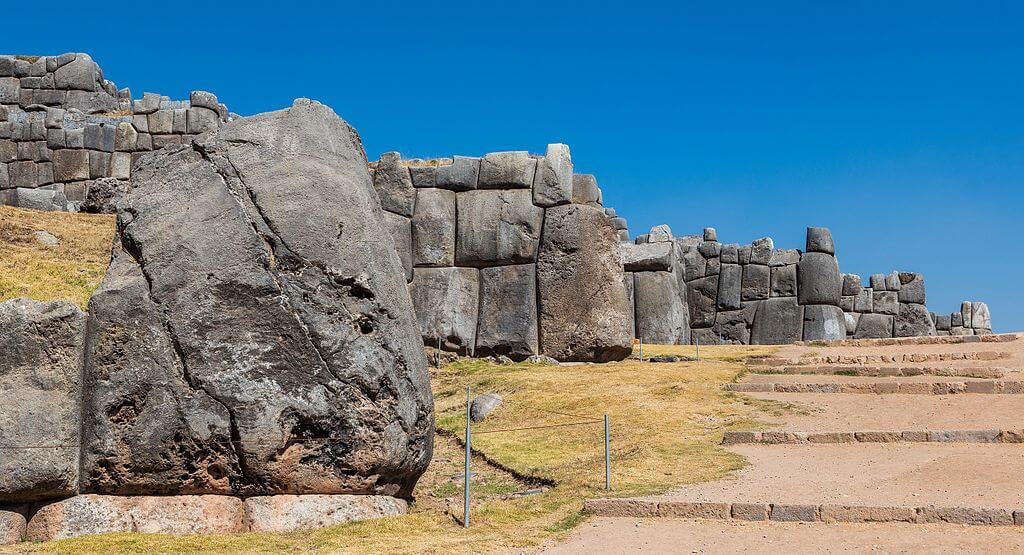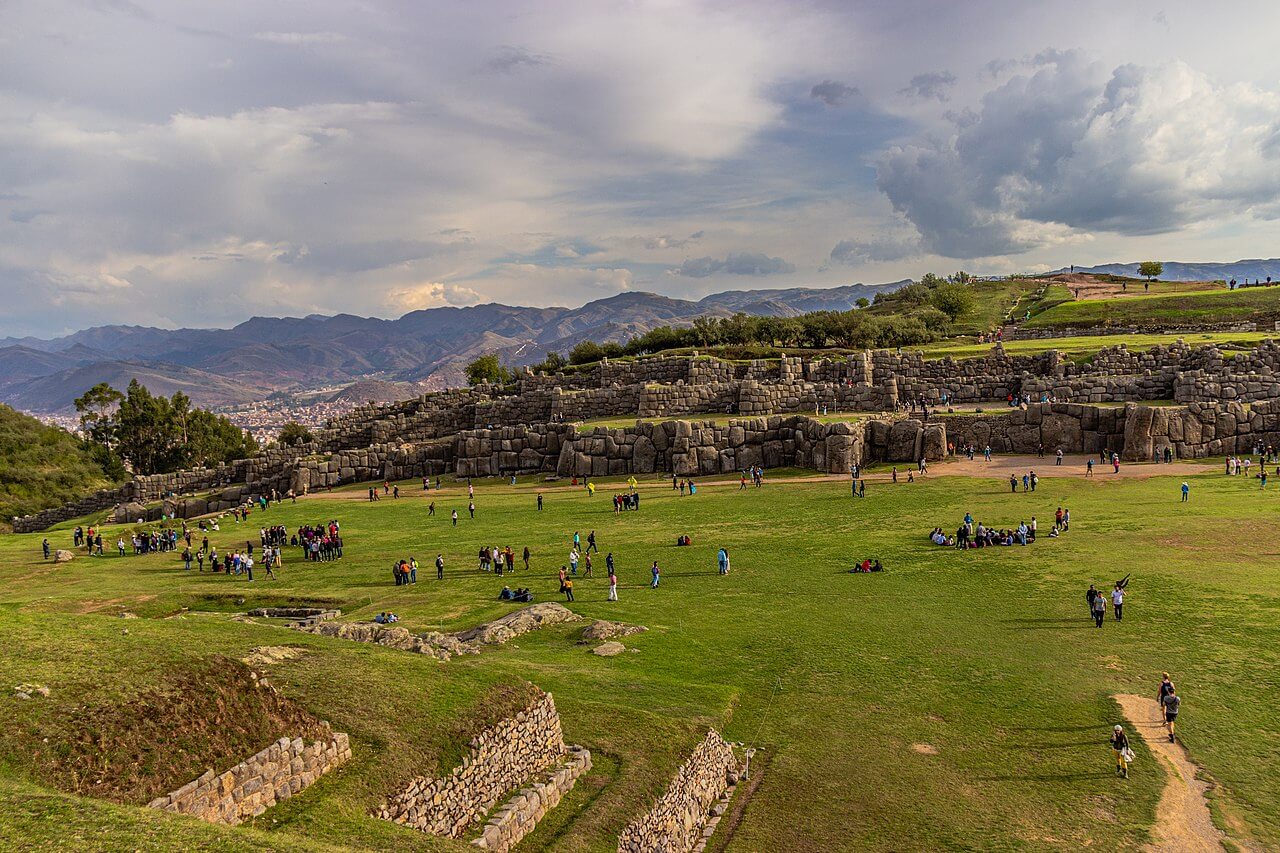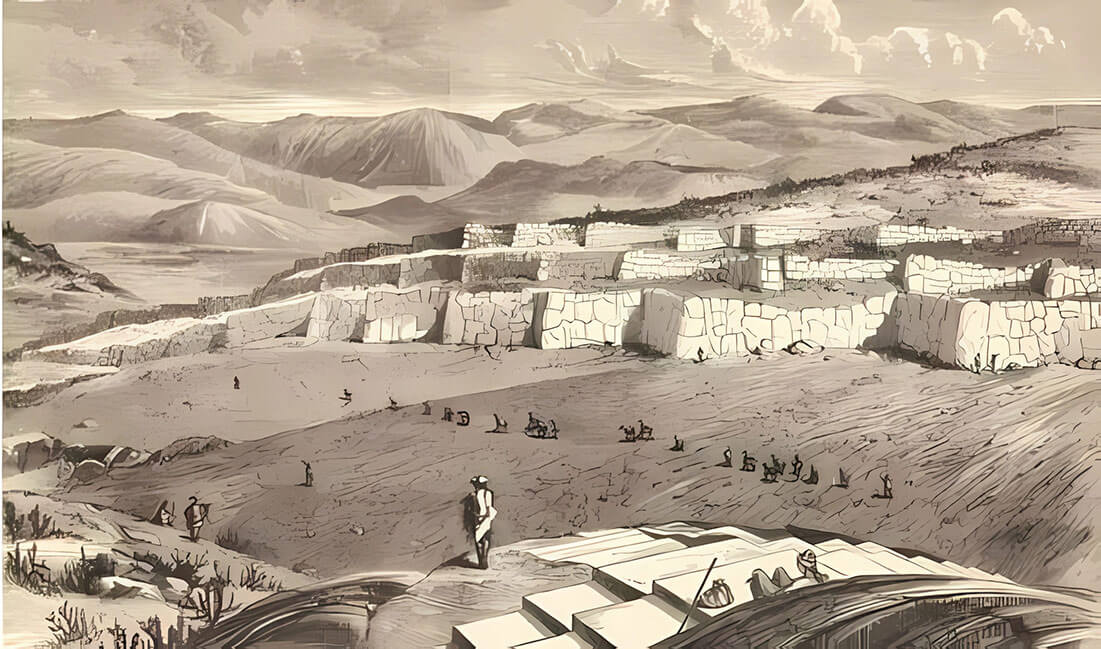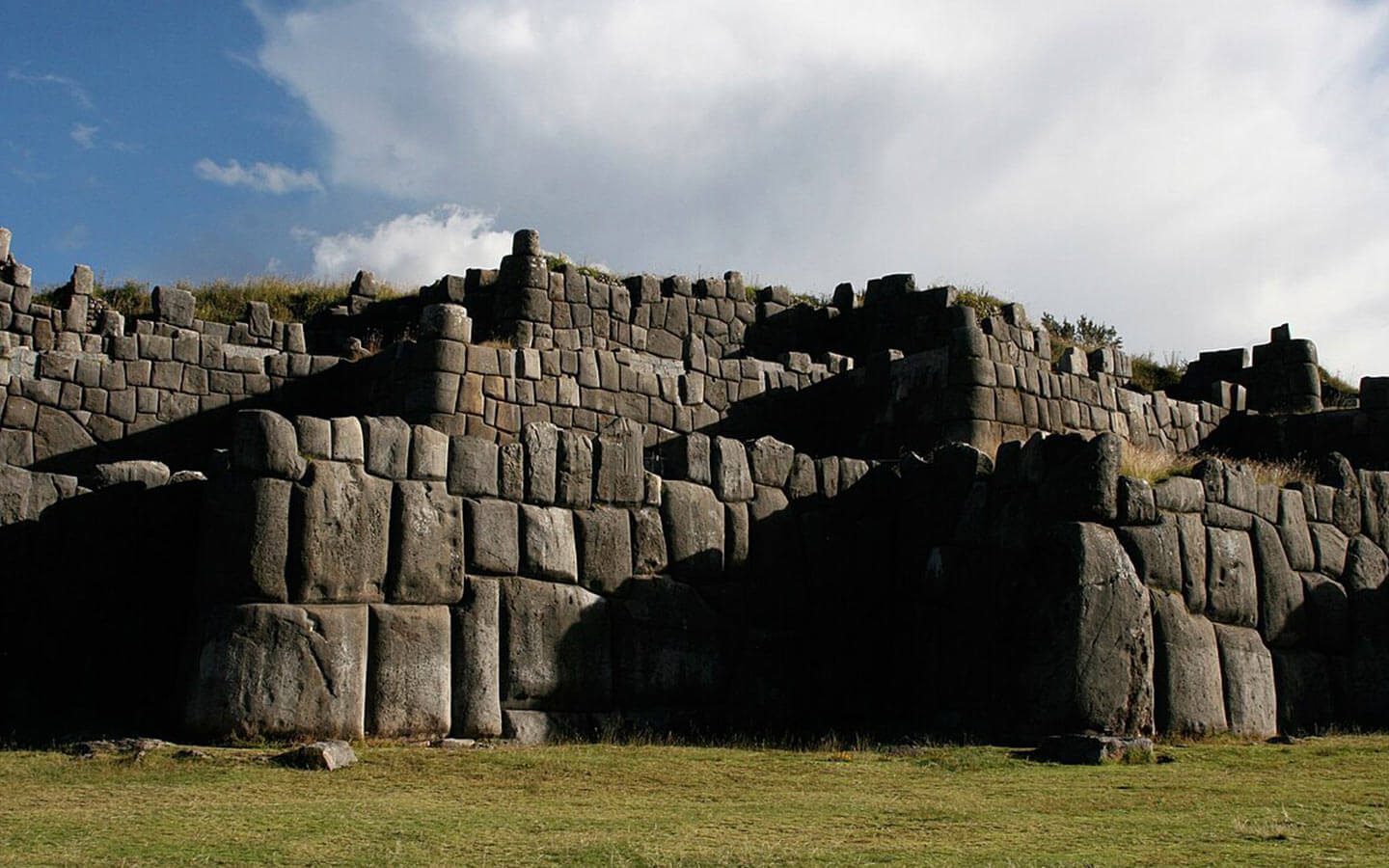Sacsayhuamán: Explore the architectural genius of the Inca Empire. Delve into its historical significance, surviving remnants, and the secrets it reveals about this ancient civilization.
Introduction to the Inca Empire: The Context of Sacsayhuamán
The Inca Empire, or Tawantinsuyu, emerged as one of the most extraordinary civilizations of the pre-Columbian Americas. Originating in the Andean highlands of Peru around the early 13th century, the empire’s influence extended over parts of present-day Colombia, Ecuador, Bolivia, Argentina, Chile, and Peru. Showcasing advanced understanding in several fields such as agriculture, architecture, and social organization, the Inca civilization represented an epitome of human adaptation and innovation. However, with the arrival of Spanish conquistadors in the 16th century, the empire’s downfall was swift and drastic, marking a substantial shift in the region’s history.
In the heart of this expansive empire, the citadel of Sacsayhuamán stood as a testament to Inca engineering and architectural brilliance. Perched on a high terrace overlooking the city of Cusco, the empire’s ancient capital, Sacsayhuamán was a strategic complex that served both military and religious purposes. Its intricate network of walls, towers, and platforms demonstrated an exceptional understanding of stone masonry and engineering principles, illustrating the mastery of the Incas.
Moreover, the construction and layout of Sacsayhuamán were deeply rooted in the Inca cosmological beliefs. To the Incas, Cusco was the center of the universe, often portrayed as the ‘navel of the world’. Accordingly, the positioning of Sacsayhuamán above Cusco signified the heavens, with each architectural element within the complex aligning with celestial bodies and astronomical events. This intricate alignment highlighted the depth of the Inca’s understanding of the cosmos and their connection with the natural world.

Although the Sacsayhuamán of today only encompasses a fraction of its original magnificence due to the destruction wrought by the Spanish conquest, it continues to symbolize the might and sophistication of the Inca Empire. The remnants of this vast complex not only offer glimpses into a glorious past but also challenge our contemporary understanding of architecture and construction. The context of Sacsayhuamán within the Inca Empire underscores its immense archaeological and historical significance, standing as a testament to a civilization that flourished centuries ago.
Historical Significance of Sacsayhuamán: Emergence and Early Descriptions
The origins of Sacsayhuamán can be traced back to the Inca leader Pachacutec in the 15th century, who embarked on an ambitious endeavor to expand and beautify the city of Cusco, resulting in the construction of Sacsayhuamán. The monumental complex was primarily a military fortress protecting the Inca capital but also held religious significance, reflecting the Inca’s harmonious blend of societal and spiritual elements.
Early descriptions of Sacsayhuamán, as narrated by Spanish chroniclers upon their arrival, portray a breathtaking architectural masterpiece. They depict an immense complex with zigzagging stone walls reaching up to six meters in height, coupled with towers that offered a panoramic view of the surrounding landscape. The precision with which these colossal stones were carved and interlocked without the use of mortar, a technique known as ashlar, is a testament to the advanced construction skills of the Inca masons.
The citadel was a strategic and symbolic center of the Inca Empire. It bore witness to significant historical events, including the fierce battle of Sacsayhuamán in 1536. This was a pivotal moment in the Spanish conquest of Peru when the forces of Manco Inca Yupanqui staged a massive rebellion against the Spanish invaders. Despite their valiant efforts, the Incas were ultimately defeated, marking a turning point in the fate of their empire.

In the post-conquest period, much of Sacsayhuamán was dismantled by the Spanish, who used the stones to construct their own buildings in Cusco. Despite this, the remaining structures continue to command awe and respect for their sheer scale and complexity. The citadel of Sacsayhuamán, with its historical and architectural significance, stands as an enduring symbol of the Inca Empire’s grandeur, resilience, and advanced knowledge in engineering.
The Citadel of Sacsayhuamán: Architecture and Monumental Structures
The architectural brilliance of the Inca civilization shines through in the citadel of Sacsayhuamán. Designed as a fortress, the complex consisted of a network of three parallel walls built in a zigzag pattern, symbolizing the teeth of a puma, an animal considered sacred by the Incas. These walls, comprised of massive limestone boulders, some weighing over a hundred tons, are renowned for their precise craftsmanship. The technique used, known as ashlar, involved cutting the stones to fit together tightly without mortar.
Towering above the walls were once three colossal watchtowers, the most prominent of which was Muyucmarca. The circular tower, believed to serve both military and ceremonial functions, is reported to have had a diameter of approximately 22 meters. The remnants of the tower, along with those of the other two – Paucarmarca and Sallacmarca, testify to the strategic layout of the complex that allowed an advantageous view over the capital and surrounding areas.

Within the compound, the Incas constructed numerous ceremonial spaces. Among these, the most fascinating is arguably the ‘Throne of the Inca’ or ‘The Inca’s Balcony.’ This rock formation, carved into a series of steps leading up to a platform, is thought to have been used for ritualistic purposes or possibly as a seating area for the Inca during public ceremonies. It provides yet another testament to the Inca’s sophisticated stone carving abilities.
Also noteworthy is the labyrinth-like structure called Suchuna (or rodadero), a series of slides created from polished andesite. It is believed that this could have been used for ceremonial purposes or simply as a form of entertainment.
The formidable architectural prowess and monumental structures of Sacsayhuamán represent a significant chapter in human architectural history. The complex is not just an example of superior masonry and strategic military design, but also a demonstration of the Inca’s deep-rooted cosmological beliefs and societal norms, a testament to a civilization that skillfully interwove utility and spirituality.
The Remains of Sacsayhuamán: A Snapshot of Today’s Landscape
What remains of Sacsayhuamán today is but a shadow of its former glory, yet it continues to inspire awe and curiosity. Despite the widespread dismantling of the complex during the post-conquest period, the colossal stone walls remain largely intact, defying time and elements. The three-tiered zigzag walls stand as a powerful testament to Inca engineering and the civilization’s ability to manipulate and utilize their environment to a staggering degree.

The remnants of the watchtowers offer a glimpse into the strategic planning that governed the complex’s design. Although much of the structure has been lost, the foundations provide insight into the towers’ scale and purpose. The largest, Muyucmarca, only has its circular base remaining, which visitors can walk around and imagine the towering structure that once commanded the skyline of ancient Cusco.
The ‘Throne of the Inca,’ despite centuries of exposure to the elements, maintains its original shape. The series of steps carved into the rock leading up to the platform can still be seen, offering an intriguing window into the ceremonial aspects of Inca society.
Similarly, the slides of the Suchuna structure continue to intrigue visitors. These smooth, polished stone channels, which many believe were used for ceremonial purposes or entertainment, still function today, adding an element of fun and interactivity to the visit.
Finally, the Chincana, also known as the labyrinth or underground tunnels, another exciting feature of the complex, is partially accessible to the public. Even though the complete extent and purpose of these tunnels remain a mystery, they certainly contribute to the intrigue and allure of the site.
In its current state, Sacsayhuamán is a fascinating juxtaposition of historical grandeur and the harsh reality of cultural destruction. Nevertheless, the remains provide a valuable opportunity for archaeologists, historians, and visitors to step back in time and appreciate the profound wisdom and skills of the Inca civilization.
Explorations and Discoveries: What Sacsayhuamán Reveals about the Inca Civilization
Sacsayhuamán continues to be a treasure trove for archaeologists, historians, and anthropologists interested in the Inca civilization. Each excavation, study, and exploration uncovers new facets about the Incas’ life, society, and technology, allowing us to piece together an image of this once mighty civilization.
The site’s engineering marvels, such as the seamless fit of the colossal stones, reveal the advanced construction techniques possessed by the Incas. The intricate workmanship observed in the structures indicates that the Inca civilization had developed a deep understanding of geometry, physics, and materials, even without a written language or the use of iron tools.
The complex’s layout and architectural elements provide vital clues about the Incas’ cosmological and religious beliefs. The alignment of certain structures with celestial events indicates that astronomy played a crucial role in the Inca civilization, influencing their agriculture, architecture, and religious practices.
Moreover, studies of the ceremonial spaces within Sacsayhuamán, like ‘The Inca’s Balcony’ and the Suchuna, have provided glimpses into the societal norms and rituals of the Incas. The existence of these spaces within a primarily military complex underlines the harmonious coexistence of different aspects of Inca society, where the spiritual and societal are intricately linked.
Lastly, the post-conquest history of Sacsayhuamán offers insights into the cultural shifts brought about by the Spanish conquest. The dismantling of the structures and reusing of the stones to construct Spanish buildings in Cusco reflect the imposition of new cultural and architectural norms on the existing civilization.
Each exploration and discovery at Sacsayhuamán paints a more comprehensive picture of the Inca civilization, its strengths, and its challenges. These findings enrich our understanding of human history and civilization and inspire a deeper appreciation for our diverse and shared cultural heritage.
Historical Challenge: Can You Conquer the Past?
Answer more than 18 questions correctly, and you will win a copy of History Chronicles Magazine Vol 1! Take our interactive history quiz now and put your knowledge to the test!

